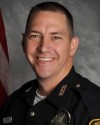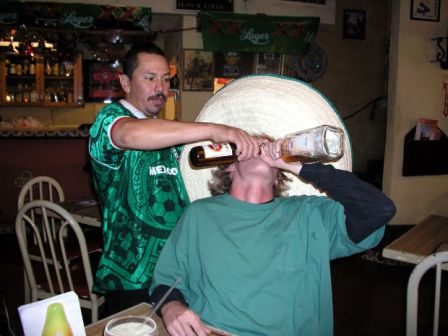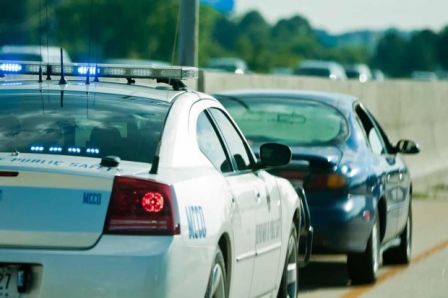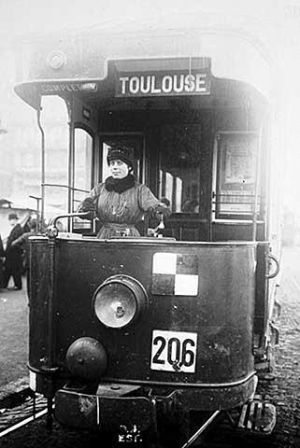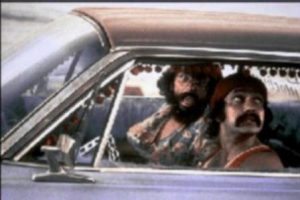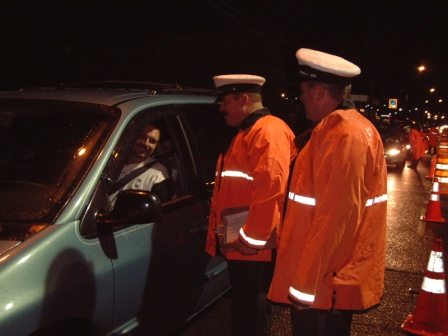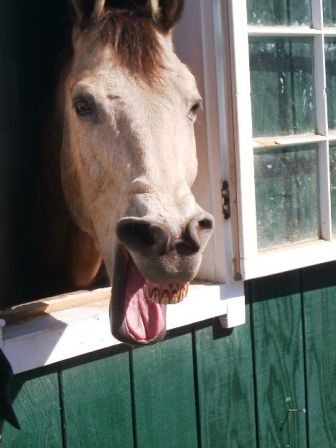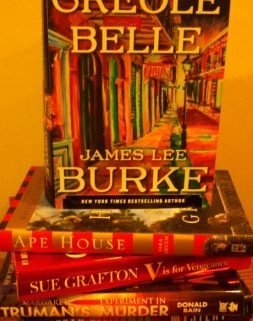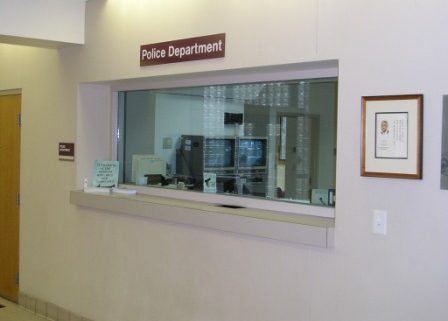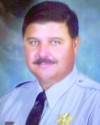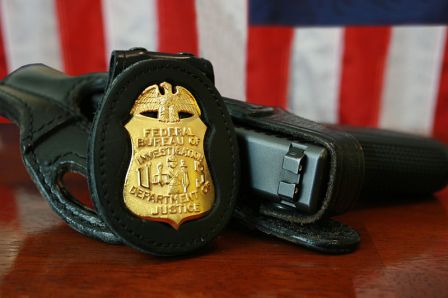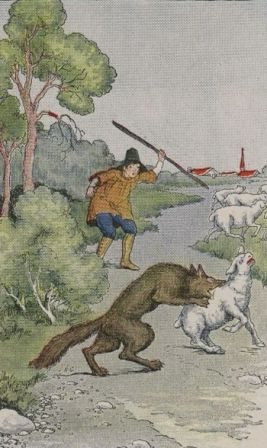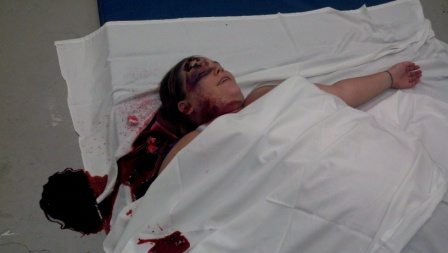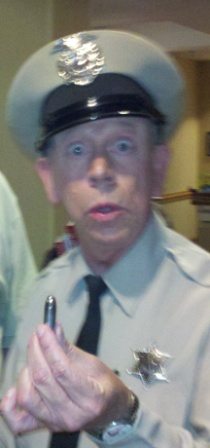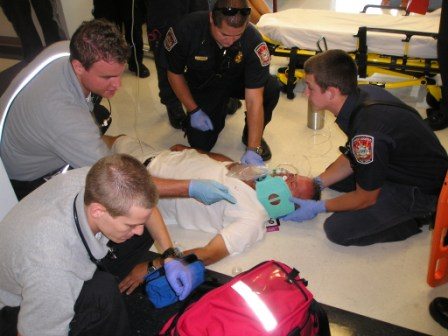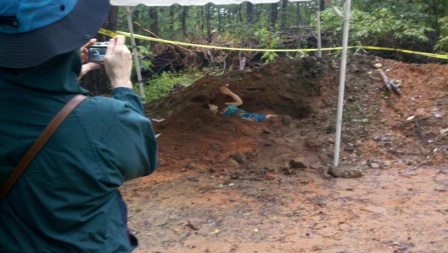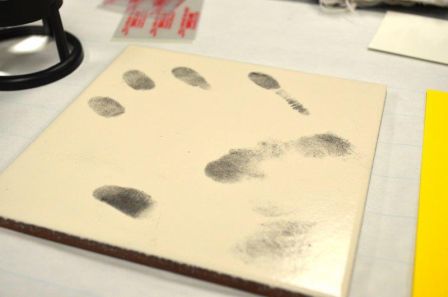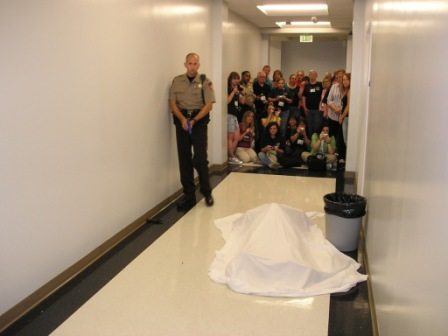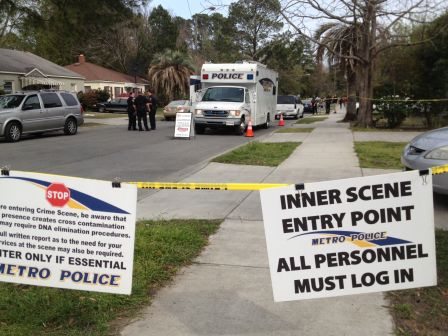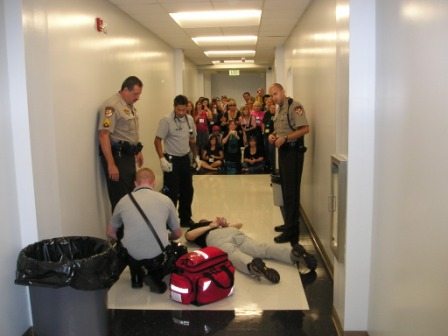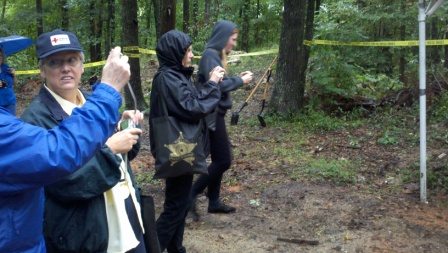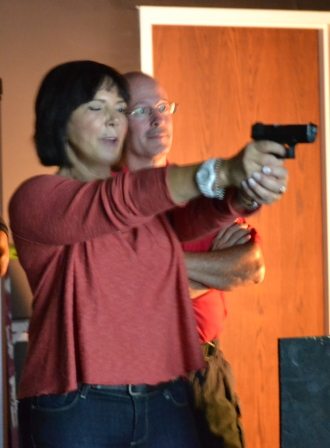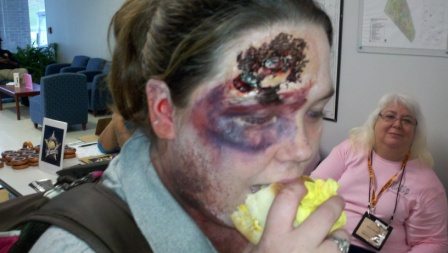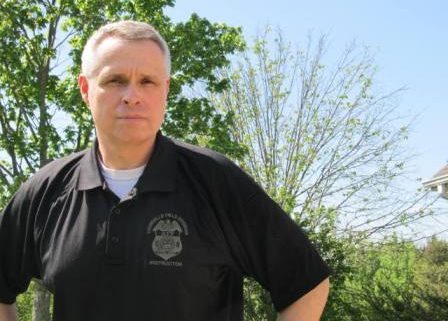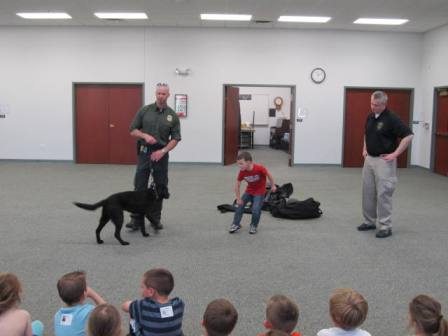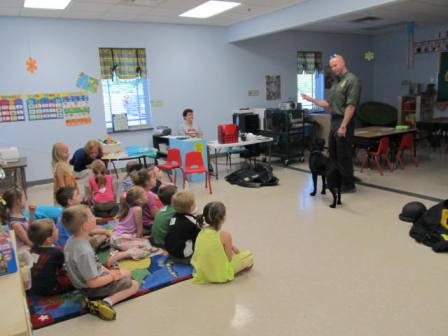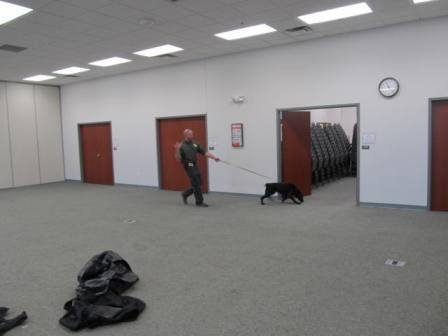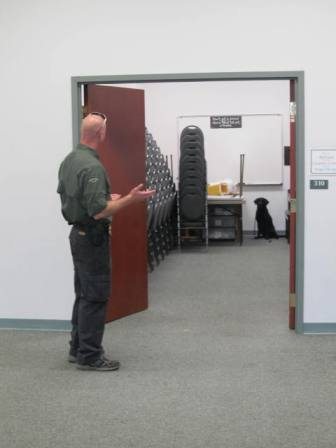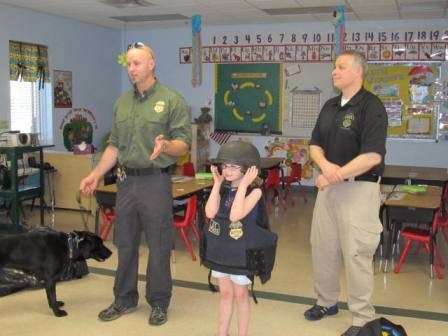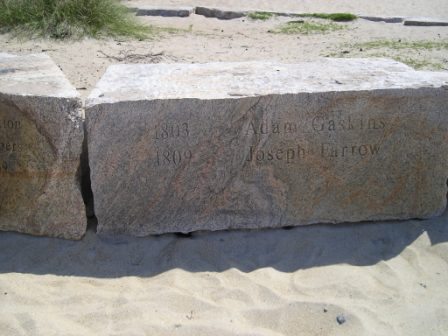It’s a small red-brick building nestled between Betty Lou’s Cut ‘n Curl and Smilin’ Bob’s Hardware and Pawn Shop. The lone parking space in front is reserved. The sign reads “Chief’s Parking Only.”
Inside, the hallway to the right takes you to the water department and the office of the building inspector. There, you can also purchase dog tags and yard sale permits. A left turn leads to the village police department, a force comprised of five dedicated, hardworking police officers—one chief, one sergeant, two full-time officers, and one part-time guy who’s also the mayor of the next town over.
Complaints can be filed with the dispatcher at the window, or by dialing the local number. Calling 911 in the Village of Bubbling Falls works the same as calling 911 in Big City, USA. Well, there is a tiny difference in the two…when you call 911 in Bubbling Falls, somebody always shows up to see what’s wrong. Not necessarily so in Big City.
Bubbling Falls dispatchers also work the computer terminals and NCIC. They know CPR and they know every single village resident and the quickest route to their houses.
Officers in Bubbling Falls attend the police academy and they receive the same training and certifications as the officers over in Big City. No, the Bubbling Falls PD doesn’t have all the latest fancy equipment with the shiny, spinning dials and winking, blinking lights. They don’t have specially trained detectives who only work homicides or white collar crime. And they don’t have divisions dedicated for traffic, vice, narcotics, and internal affairs. Budgets simply don’t allow it.
Instead, officers in Bubbling Falls are cross-trained. They each know how to run radar, direct traffic, dust for fingerprints, collect evidence, interview suspects and witnesses, and they know how to investigate a murder. They work burglaries and assaults. They also arrest drunk drivers, drug dealers, people who abuse their spouses, rapists, pedophiles, and robbers. They break up fights, help kids cross the street safely, and they locate lost pets. And, if one of their officers steps out of line they’ll straighten his butt out too.
Of course, Bubbling Falls is totally fictional, but there are many actual small towns and villages with small police departments. And those small departments work the same type cases as the departments in larger cities. No, not all departments are large enough to have officers who serve as detectives. But they all employ police officers who are fully capable of investigating any type of crime. And they do, from traffic offenses to murder. Sure, they do the same work as a detective, but they do it while wearing a uniform instead of some fancy-smancy suit and high-dollar wingtip shoes.
So you see, most small departments operate the same way as the large ones, just on a smaller scale.
For example:
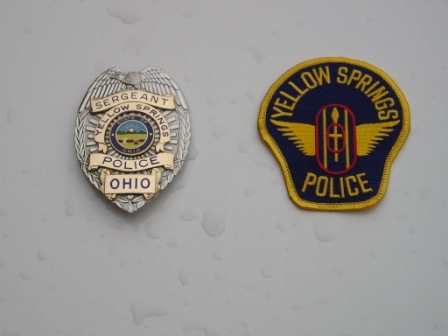
The Yellow Springs Ohio Police Department serves a village of slightly less than 4,000 residents. Therefore, the department is small. However, there’s a college in town and the village is located near Dayton and Springfield, which translates into the potential for a higher crime rate than would normally be found in a town that size. And, the potential for more crime means more proactive police work for the small number of officers.
The YSPD doesn’t have plainclothes detectives to investigate major crimes. Instead, as is the case with many small departments, uniformed officers investigate all crimes. So, when an officer receives a call from the dispatcher they see it all the way through—from the 911 call through court, including evidence collection, interviewing witnesses, etc.
If the officers need additional help, or resources, they call on the sheriff’s office.
Remember, not all departments operate in the same manner. Some smaller departments DO have detectives, and those investigators may or may not wear a uniform. They could dress in a coat and tie, and they could have the title of detective, or investigator. If they’re a detective who wears a uniform their rank would normally remain the same as it was when they were assigned to patrol duties. There is no standard rule. It’s entirely up to the individual department.
One other thing to remember—a police department and a sheriff’s office are not the same. Deputy sheriffs work for sheriffs, not police chiefs. But that’s a topic for another day.

YSPD dispatcher
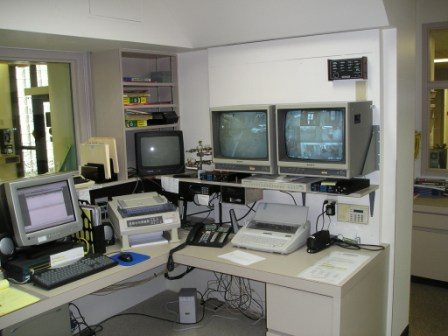
NCIC equipment
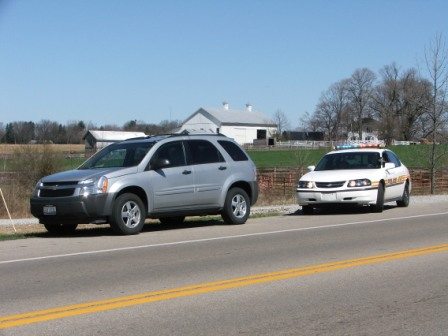
Felony traffic stop
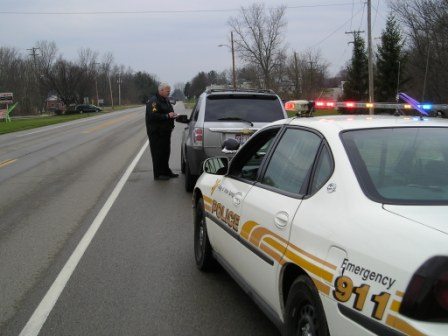
Issuing a traffic summons

An arrest
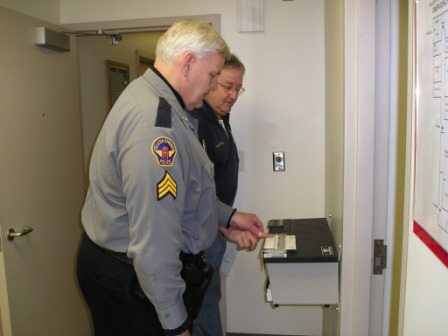
Small departments may not have LiveScan fingerprint terminals. If not, they’d still use the old ink and ten-print cards

Ten-print fingerprinting station
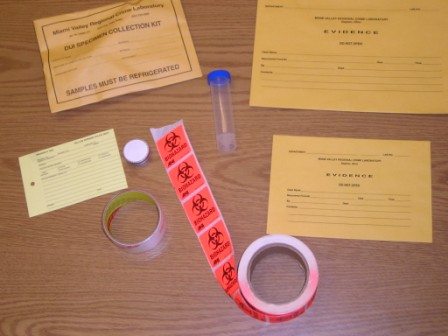
Small departments collect and preserve evidence using the same methods and materials used by larger departments

Evidence storage is on a smaller scale in smaller departments

Evidence room in a small department
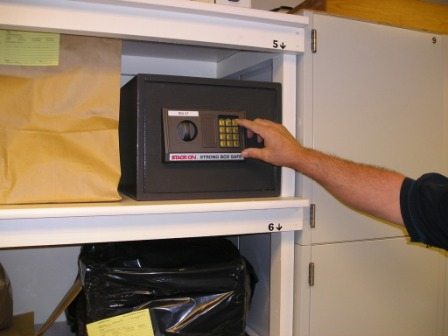
Evidence safe in a small department (for narcotics, etc.)

Officers’ shared workstation/office in a small department
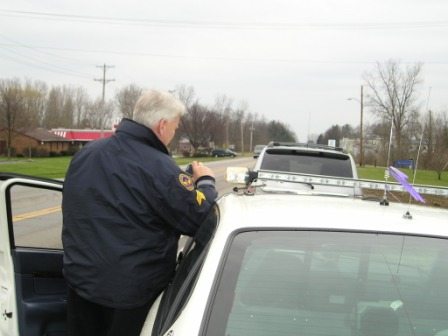
Small departments follow the same procedures as any other department
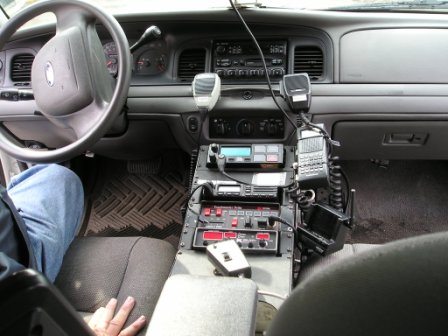
Interior of a small department patrol car features the same equipment as any other patrol car

One interesting point to note is that Ohio mayors are authorized by law to hold Mayor’s Court, where they hear misdemeanor cases, such as bad check cases, assaults, tax-related issues, cases involving animals, trespassing, shoplifting, traffic offenses, etc.
Ohio law requires that prior to hearing certain cases, such as drug and alcohol related traffic offenses, each Mayor must attend 6 hours of classroom training. They must also attend a three-hour continuing education class each year.
State law also requires each Mayor’s Court facility be:
– Easily accessible by the public
– well-lighted and heated
– the mayor should preside from an elevated bench or table that separates them from the public. The table, or bench, must be flanked by the state flag and the U.S. flag.
– tables and chairs must be positioned so that all parties involved can see and hear the proceedings
– mayors must dress in attire that’s appropriate for the dignity of the proceedings
– smoking, foul language, and eating are not permitted in mayor’s courts
– Even though most mayor’s courts are held in small towns and villages, where nearly everyone knows his neighbors, first names and nicknames should not be used during the hearings.
– if an offense carries the possibility of jail time, the mayor must appoint an attorney to represent the defendant(s), if they haven’t already retained one.
*Of course, a defendant could save everyone a lot of time by checking the “guilty” box on the form handed to him at the start of the proceeding.
STATEMENT OF RIGHTS
WAIVER OF RIGHTS
PLEA OF GUILTY OR NO CONTEST
Defendant’s Name: ____________________________________________________________
In the __________________________________ Mayor’s Court, ____________________, Ohio
Case No. _________________Charge(s)____________________________________________
I am present in Court today and have been told:
(1)The law requires this Court to bring me to trial within thirty days of the date I was charged.
(2)I have a right to have a lawyer here at anytime, and I may have my case continued to get a lawyer(s).
(3) If the charge I am facing carriesa possible jail sentence, the Court will appoint a lawyer at no cost to me if I cannot afford to hire one.
(4) If the charge I am facing carries a possible jail sentence, I have the right to a jury trial.
(5) I have a right to remain silent. Anything I say can be used against me.
(6) The maximum penalty I can receive if I am convicted. If this is a traffic case, I also may lose the right to drive for some time and have points added to my driving record.
(7) If I am not a United States citizen, that a conviction could result in my deportation or denial of citizenship according to the laws of the United States.
(8) I have the right to remain free on a reasonable bail while my case is awaiting trial.
I HAVE READ THIS STATEMENT AND I UNDERSTAND IT. I WAS GIVEN THE CHANCE TO ASK QUESTIONS AND THEY WERE ANSWERED.
I have decided on my own to waive my rights and proceed today. I do not want a continuance to talk to a lawyer.
I plead:
Guilty ___
No Contest ___
Signed: ___________________________ Date ______________________________
Witnessed by: ___________________________ Date ________________________
background: #bd081c no-repeat scroll 3px 50% / 14px 14px; position: absolute; opacity: 1; z-index: 8675309; display: none; cursor: pointer; top: 1993px; left: 20px;”>Save


